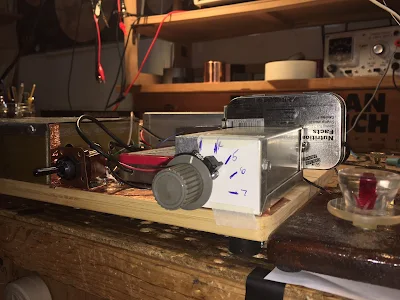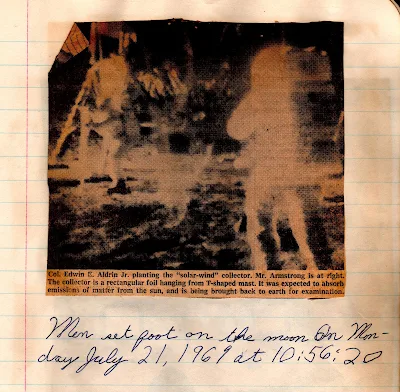Success! Congratulations to the Planetary Society. Amazing achievement.
http://www.planetary.org/blogs/jason-davis/lightsail-2-successful-flight-by-light.html
Serving the worldwide community of radio-electronic homebrewers. Providing blog support to the SolderSmoke podcast: http://soldersmoke.com
Podcasting since 2005! Listen to our latest pocast here:
Podcasting since 2005! Listen to Latest SolderSmoke
Wednesday, July 31, 2019
Pete N6QW's Three Dozen (AT LEAST THREE DOZEN!) Homebrew Rigs

In our last podcast I was saying how Pete's many, many analog homebrew transceivers have earned him the right to shift into the digital world. Incredibly, someone chose to question Pete's credentials in this area. Troll! Pete's blog has pictures of many of the rigs. It is quite inspirational. Check it out:
Tuesday, July 30, 2019
N8NM's Homebrew Stereo

https://n8nmsteve.blogspot.com/2019/07/a-homebrew-stereo-for-shack.html
Excellent work Steve. You are right -- lugging something around for 30 years does create an obligation to put it to good use. FB. Love the cakepan. And the multiplexer chip. And above all THE JEWELED LENS.
Monday, July 29, 2019
Walter KA4KXX Operates his FB Al-Fresco HB Scratch-Built BITX 75 (Video)
Dear Bill N2CQR:
For your amusement, the attached video (from 2:20 - 3:40) shows
me operating portable at a tailgate event using my second
scratch-built BITX, with this one running 45W on 75M.
Features include analog VFO, a 16-pin LM380 with all ground
pins heat-sinked for powerful audio, and 3-transistor uBITX-type
low-level RF amps. The 8-crystal filter is also like the uBITX design
but at an 11 MHz IF. The microphone amp is a 741 Op Amp which I
believe has better gain, gain adjustability, and frequency response than
any of the transistor designs. The transmit adjustable driver amp is adapted from the FET
circuit used in the Wee Willy. The Transmit LPF is hard-wired to the antenna connector
for simplification and to minimize RF losses, so in receive mode the single relay in the rig
connects the receive section in parallel, which causes some signal loss, but not much.
Finally, and most notably, I believe that my RF Power Amp is the only one in the world to use
model airplane engine mufflers as heat sink cores...
72,
Walter
KA4KXX
Orlando, FL
Thursday, July 25, 2019
Fish Soup 10 QRP Transceiver in Action on 40
I took this quick video during a QSO on July 20, 2019 with Ed K3VA in Philadelphia on 40 meters. Note: Plenty of of audio from the Herring Aid 5 -- no additional amplification in the speaker.
Wednesday, July 24, 2019
Tuesday, July 23, 2019
Monday, July 22, 2019
Making Fish Soup from Herring and Tuna (How to Build a Fish Soup 10 Transceiver)
Just in case some other fanatic someday thinks about trying to turn a Herring Aid 5 and a Tuna Tin 2 into a Fish Soup 10. This will also serve as a note to myself on how I did this. Above are my suggestions on how to get the VFO signal into the transmitter and the receiver. Both RX and TX can easily be returned to their original condition.
Saturday, July 20, 2019
A Frequency Readout for the Fish Soup 10 (with cool BLUE numerals)
Note the cool BLUE numerals. They represent 7040, 7050, 7060, 7070. The little black "pointer" is from a power cord wall fastener. My tuning cap has a nice reduction drive -- the pointer follows the movement of the capacitor blades. The VFO is very stable.
Simplicity is a virtue. CW is, I think, outmoded and kind of absurd (one letter at a time? really?), but it does allow for extreme simplicity. Using a rig with just 10 transistors, putting out half a watt of RF, I am regularly communicating with people. This is what I like about CW.
I've had about 12 solid contacts with this rig since putting it on the air earlier this month. The VFO was a huge improvement over being crystal controlled. Crystal control was OK back when receivers were broad and hams tuned around for replies, but those days are gone. Getting the transmit offset set correctly was another huge improvement.
Simplicity is a virtue. CW is, I think, outmoded and kind of absurd (one letter at a time? really?), but it does allow for extreme simplicity. Using a rig with just 10 transistors, putting out half a watt of RF, I am regularly communicating with people. This is what I like about CW.
I've had about 12 solid contacts with this rig since putting it on the air earlier this month. The VFO was a huge improvement over being crystal controlled. Crystal control was OK back when receivers were broad and hams tuned around for replies, but those days are gone. Getting the transmit offset set correctly was another huge improvement.
From Bill's Apollo 11 Scrapbook
From the Apollo 11 scrapbook I made back in '69. I got the date for the moonwalk wrong. But hey, I was only 10 years old.
Thursday, July 18, 2019
Video of Fish Soup 10 QSO (from N3MLB)
So cool. During our QSO on 40 Meter CW today, N3MLB recorded it and put it on YouTube. This is what my 500 milliwatt Fish Soup 10 rig sounds like in Pennsylvania. Thanks a lot Chris.

From Chris's QRZ.com page:

Monday, July 15, 2019
The "Fish Soup 10" Homebrew QRP CW Transceiver
The box with the two grey knobs on the left is the Herring Aid 5, the receiver that took me 38 years to complete. The box on the right is a VFO I originally built for my first BITX40Module -- it started out around 4 Mhz but I pulled turns off the coil until it was in the 40M CW band. The Altoids in near center has the buffers -- a 40673 MOSFET and a 2n3904 BJT. The box in the back holds the Tuna Tin 2. There the oscillator has been reconfigured as an amp. A relay switches the output from the buffers between the receiver and the transmitter. That big switch in the center switches the antenna and the 12 V for T/R. The circular black thing is piezo buzzer used for CW sidetone -- I have it glued to the board upside down to keep the volume down.
The whole thing is mounted on a kitchen cutting board. A breadboard!
The most difficult part of all this was getting the needed 800 Hz drop in TX freq on transmit. You need to do this with a rig like this or else you won't be in the other fellow's passband. I did a lot of cut and try -- in the end I put a 5 pf cap across the coupling cap from VFO to buffer. This 5 pf cap switches in on transmit via a small relay. It works. I just spoke to N8AFT out in Columbus, Ohio and I was in his passband.
So five transistors in the receiver, two in the transmitter and three in the VFO/Buffer. So it is the Fish Soup 10.
It puts out about half a watt. On CW. I am feeling virtuous and vaguely superior. I've made several more contacts. It all works very well and is a lot of fun.
Subscribe to:
Comments (Atom)







